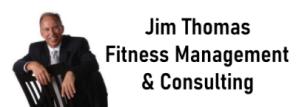When studying the economy, three interest rates control lending to banks, mortgages, and consumer loans. The three terms that often get confused are federal funds, prime, and discount interest rates, which helps with understanding SBA loans.
Anyone wanting to know how the economy works needs to know what the discount rate, the federal funds rate, and the prime rate are and why they are important.
What Is the Discount Rate?
The discount rate is an interest rate the Federal Reserve charges for discount loans. This is the rate the Fed sets, so member banks can borrow money overnight if they need funding. The Fed sets the rate to allow banks to borrow so banks don’t fall below their mandated reserve levels.
The discount rate is also called the primary credit rate. The Federal Reserve sets this rate so banks can borrow money if they lend too much or have too many withdrawals on any given day. Banks borrow the money at the discount rate overnight to cover their overdrafts.
Discount rates also affect mortgage rates. When the discount rate increases, the mortgage interest rates increase. The 10-year bond rate also affects mortgage interest rates.
The prime rate also is affected by the discount rate. When the prime rate increases, consumers tend to slow their demand for new loans. The result is a slowing housing market and economy. When the Fed lowers the discount rate, the prime rate decreases, and banks can choose to lower their mortgage interest rates, too.
The Federal Funds Rate and the Prime Rate and Why Are They Important?
The Federal Reserve Bank also sets the prime and the federal funds rate. Banks can borrow from the Federal Reserve, and they can borrow from each other. With the Federal Funds Rate, banks can borrow from each other and charge interest.
What Is the Federal Funds Rate?
The Federal Reserve sets a target rate and manages it by buying and selling government bonds. They use the federal funds rate to control inflation by managing available funds that banks borrow from each other. They can use the reserves to give more loans to keep the economy going.
What Is the Prime Rate?
Along with the Federal Funds Rate, the prime rate is also important. This rate is for borrowers who have the best credit and the lowest default risk. Individual borrowers usually don’t get loans at the prime rate, but large corporations do. Because corporations rarely default, banks can charge the lower prime rates rather than the higher rates they charge to high-risk customers.
The prime rate is also a benchmark for consumer loans. Commercial banks put an additional interest rate on top of prime when they award loans to their customers. This additional amount is called a margin.
For example, if prime is two percent and banks add a margin of three percent, borrowers pay a five percent interest rate on their loan. Banks use credit scores to determine how high to set the margin.
Why Do These Rates Matter?
The two rates let the Federal Reserve speed up or slow down the economy. When they rate the Federal Funds Rate, banks stop borrowing from each other. They also slow their lending to consumers and corporations.
When the Fed wants to speed up the economy, they lower the Federal Funds Rate to get consumers spending and banks lending. Mortgage rates do not have to follow suit because other factors affect mortgage lending.
How Is the Federal Fund Rate Established?
The Federal Fund Rate fluctuates based on the supply and demand. An organization called the Federal Open Market Committee determines the rate based on a target that depends on funds and what banks need to cover their loans.
Banks need to have a reserve requirement for their deposit liabilities. The reserve funds sit in the Federal Reserve. Interestingly, all of the dollar amounts are on paper, as the Federal Reserve and banks do not exchange physical cash. Bank reserves must be a percentage of their total liabilities. Often, the percentage is as small as three percent.
Who Sets the Federal Fund Rate?
The Federal Reserve also sets a target for the Federal Fund Rate by moving U.S. Treasury securities. As the Federal Reserve Bank buys more securities, the Federal Fund Rate falls. The opposite happens when the Fed sells its securities, as bank reserves fall, causing the Federal Funds Rate to rise.
The process of setting the Federal Fund Rate is complicated, as it sets important monetary policy.
Federal Funds Rate vs. Discount Rate
Since the Federal Funds Rate and the Discount Rate do similar things, it is helpful to understand the differences. The Federal Funds Rate is the rate that banks, credit unions, and other financial institutions charge each other for short-term, overnight loans. When the Federal Reserve Bank gives a loan, they charge the Discount Rate.
Is the Federal Funds Rate Higher Than The Discount Rate?
The Federal Funds Rate tends to be lower than the discount rate. Looking at the Federal Funds Rate vs. Discount Rate vs. Prime Rate, the lowest is the Federal Funds Rate. When the Federal Reserve Bank charges the Discount Rate, the percentage serves as collateral, so the bank repays the Fed.
What Is the Relationship Between the Federal Funds Rate and the Prime Interest Rate?
The Federal Funds Rate does not directly affect the Prime Rate. However, Prime Rate tends to change if the Federal Funds Rate changes. The Federal Funds Rate and Discount Rate work together to help financing institutions stay flush with cash.
Why Doesn’t the Federal Reserve Target the Prime Interest Rate?
The Federal Reserve gives banks some leeway with the Prime Interest Rate. Banks use the Federal Funds Rate as the target, then adjust accordingly. The prime rate is 300 points or three percent above the Federal Funds Rate. Variable interest rates are connected to the Prime Rate, and banks can set their own prime rates. Banks can also choose the published Prime Rate.
What Is the Prime Rate Today 2022?
The Prime Rate today is 3.25%, 300 points above the Federal Funds Rate, which is between 0% and 0.25%. This rate determines how banks set their prime rates because they don’t have to follow a set rate, so they can set variable and fixed rates.
Why Learn About Economic Interest Rates
Understanding the difference between federal funds, prime, and discount interest rates helps consumers understand how the economy moves. When the federal funds’ rates change, bank deposits like savings accounts and money market accounts have changes in interest. It has a major effect on adjustable rate mortgages.
Click here for more details or call 214-629-7223 or email jthomas@fmconsulting.net for more information. Or, apply now.
An Outsourced CEO and expert witness, Jim Thomas is the founder and president of Fitness Management USA Inc., a management consulting, turnaround and brokerage firm specializing in the gym and sports industry. With more than 25 years of experience owning, operating and managing clubs of all sizes, Thomas lectures and delivers seminars, webinars and workshops across the globe on the practical skills required to successfully overcome obscurity, improve sales, build teamwork and market fitness programs and products. Visit his Web site at: www.fmconsulting.net or www.youtube.com/gymconsultant.






